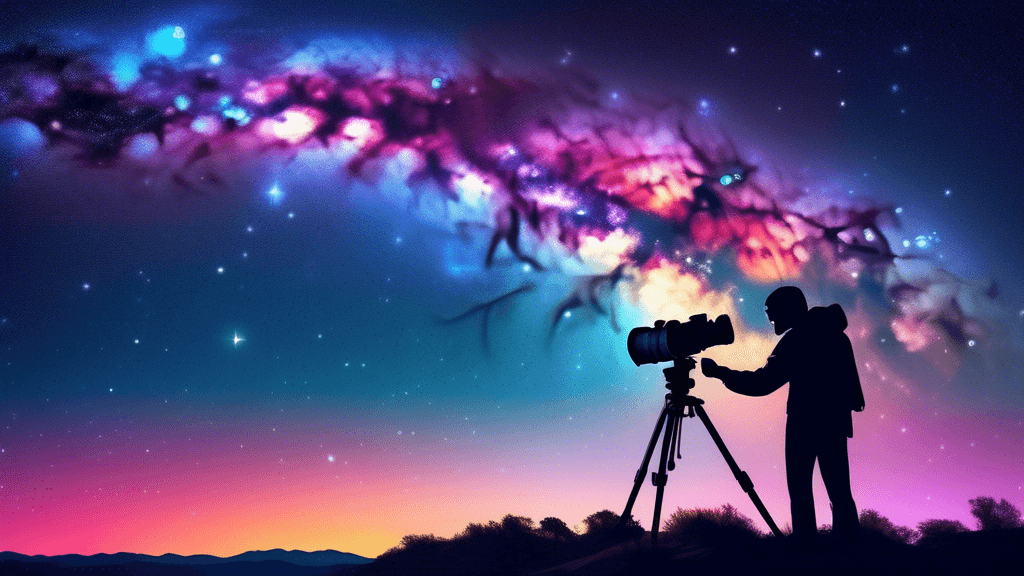
Capturing the Cosmos: Astrophotography Tips for the Southern Sky
Share
Exploring the Southern Skies Through Astrophotography
Have you ever gazed up at the night sky from the Southern Hemisphere and wished you could capture its mesmerizing beauty? Astrophotography is not just an art; it's a scientific window that allows us to peer into the expansive, starry universe. This blog is tailored for amateur photographers and stargazers keen on immersing themselves in the celestial scenes of the Southern Hemisphere.
Understanding the Southern Celestial Sphere
Before diving deep into the techniques of astrophotography, it’s crucial to understand what makes the southern sky unique. Unlike the Northern Hemisphere, the Southern Hemisphere offers a view replete with distinctive constellations like the Southern Cross and the Magellanic Clouds, and even the center of the Milky Way. This makes for not only scientifically rich but also visually stunning photography opportunities.
Why is the Southern Sky Special?
- The Milky Way's Galactic Center: Visible prominently in the Southern Hemisphere, offering breathtaking wide field astrophotography shots.
- Exclusive Constellations: Home to constellations such as Carina, Centaurus, and Crux, which are either not visible or barely visible in the Northern Hemisphere.
- Less Light Pollution: Many southern locations boast darker skies, crucial for capturing clearer, more detailed astrophotographic images.
Essential Equipment for Astrophotography
To begin your journey in capturing the cosmos, certain tools and gadgets are indispensable. Here's what you need:
Choosing the Right Camera and Lens
For beginners and those on a budget, a DSLR or mirrorless camera that allows full manual mode is recommended. You can utilize wide-angle lenses to capture expansive sky views or a telephoto lens for deep-sky objects. Renowned astrophotographer, Dr. John Smith, emphasizes the importance of using manual settings:
Understanding your camera's ability to adjust settings like ISO, exposure time, and aperture is crucial. Astrophotography is about balancing these elements to capture as much light without losing detail.
Using a Tripod and a Tracker
A sturdy tripod is your best ally against the Earth’s rotation, especially when engaging in long exposure photography. Additionally, investing in a star tracker can immensely improve the quality of your photos by compensating for the Earth's rotation, allowing you to take clearer, longer exposures without star trails.
Best Practices for Capturing the Southern Night Sky
Photographing the night sky involves more than just pointing your camera upwards. Here are some technical tips and best practices: Tabby's Star.
Master the Art of Focus
Focus is a critical factor in astrophotography. To achieve sharp focus on stars, use the live-view feature of your camera and digitally zoom in on a bright star to manually adjust your focus. It might take several tries to perfect this, but the clarity of your astronomical subjects will be well worth the effort.
Optimize Your Exposure
Long exposures can reveal wonders of the galaxy invisible to the naked eye. Start with an exposure of around 15-30 seconds and adjust as necessary depending on your equipment and the sky’s brightness. However, be vigilant about the exposure length to avoid capturing star trails—unless that’s the effect you’re aiming for!
Compose with Thought
Composition in astrophotography is as crucial as it is in daytime shooting. Including elements like the horizon, silhouettes of trees, or mountains can add depth and interest to your celestial photographs. Consider what foreground elements can enhance the cosmic spectacle above and try to incorporate them creatively.
Post-Processing: Bringing the Cosmos to Life
The journey of astrophography doesn’t end with clicking the shutter. Post-processing plays a pivotal role in enhancing the details and colors of your night sky images. Software like Adobe Photoshop and Lightroom can be invaluable. Adjustments like noise reduction, contrast, and color balance are essential to transform a good shot into a galactic masterpiece.
The Ethical Dimension of Astrophotography
While processing, it's important to maintain the integrity of what the camera captured. Overprocessing can lead not only to a loss of authenticity but also misrepresent what the night sky truly looks like. Aim to enhance, not overpower the natural beauty of the stars.
Remember, every night sky is a new canvas, and the Southern Hemisphere offers some of the most splendid celestial views on this planet. Step out, look up, and capture the cosmos through your lens. Who knows what mysteries your photographs might unveil?
Ready to Start Your Astrophotography Adventure?
With the right equipment, techniques, and a touch of patience, you’re well on your way to capturing stunning photographs of the southern night sky. Celebrate the cosmos, share your captures with the world, and continue to look up in wonder—the stars are waiting for you.





